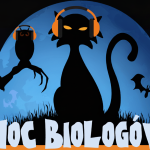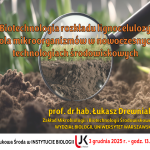| Grupy badawcze / Research groups
Team
Prof. Lankoff Anna Ph.D.
Prof. Wójcik Andrzej Ph.D.
Lisowska Halina Ph.D., Assoc. Prof.
Węgierek-Ciuk Aneta Ph.D.
Płódowska Magdalena Ph.D.
Research topics
The use of ionising radiation for the diagnosis and treatment of lymphoma and brain tumours has significantly improved healthcare and patient outcomes. Ionising radiation is now relied on heavily for patient diagnosis and treatment. We investigate the effects of radiation exposure on patients, workers and carers as well as the public and the environment during patient management. It will organise high-level multidisciplinary training in the field of radiation dosimetry, risk appraisal and radiation protection. More specifically, we develop new dosimetry and risk appraisal methods and tools. Artificial intelligence (AI) will be used to determine the radiation burden on patients, and new techniques will be designed to manage data from radiation therapy sessions.
Projects
HORIZON 2020 SINFONIA 945196 Radiation risk appraisal for detrimental effects from medical exposure during management of patients with lymphoma or brain tumour.
NCBiR Pol-Nor/201040/72/2013 Green fuels and human health - toxicity of engine emissions from 1st and 2nd generation biodiesel fuels.
National Centre for Science MINIATURA Analysis of gene expression regulation processes in A549 and BEAS-2B cells treated with coraline in combination with ionizing radiation.
Collaboration
Institute of Nuclear Chemistry and Technology, Poland
Stockholms Universitet, Sweden
Methods
RT-qPCR, Western blot, ELISA, confocal microscopy, comet assay, flow cytometry, micronucleus test, chromosome aberration assay, gamma-H2AX assay, immunofluorescence methods, in vitro cultivation methods of eukaryotic cells Team
Prof. Arabski Michał Ph.D.
Węgierek-Ciuk Aneta Ph.D.
Gałczyńska Katarzyna Ph.D.
Research topics
Our group is a multidisciplinary research team operating at the interfaces of biophysics, nanobiology and nanomedicine. In studies, we used the nowel laser interferometry system to measure the diffusion properties of new antibacterial agents and anticancer drugs through bacterial biofilm and eukaryotic cell monolayer, respectively. These results are compared with the biological effect of testing agent by microbiological cultivation methods, flow cytometry or molecular biology methods.
Projects
Ministry Education and Science, Polish Metrology, "Development of metrological basics of biomedical measurements with the use of selected methods of quantitative phase imaging".
National Centre for Science OPUS No. UMO-2017/27/B/NZ6/00199 Gasdermin as a potential permeabilizing agent of outer cell membrane of Pseudomonas aeruginosa in order to enhanced bactericidal effect of recombinant phage endolysins.
National Centre for Science (NCN) Project No. 2016/21/B/NZ6/01157 Elaboration and characteristics of biocomposites with anti-virulent and anti-bacterial properties against Pseudomonas aeruginosa.
National Centre for Science (NCN) Project No. 2015/18/M/NZ6/00413 Surface carbohydrate-dependent phages select for resistant bacterial population that become more susceptible to host defense.
National Centre for Science (NCN) Project No. 2012/04/M/NZ6/00335 Obtention of recombinant exopolysaccharide (EPS) depolymerase coded by Pseudomonas aeruginosa phages and determination of its activity in biofilm degradation.
COST project, Action CA18113 Understanding and exploiting the impacts of low pH on micro-organisms.
COST project, Action BM1003 Microbial cell surface determinants of virulence as targets for new therapeutics in cystic fibrosis.
Collaboration
University of Alcala, Spain
KU Leuven, Belgium
Warsaw University of Technology, Poland
University of Wroclaw, Poland
University of Lodz, Poland
Łukasiewicz – ŁIT, Poland
Methods
UV-VIS, RT-qPCR, Western blot, ELISA, DNA microarray, confocal microscopy, microbiological cultivation techniques, laser interferometry Team
Artur Kowalik, Ph.D., Assoc. Prof.
Prof. Arabski Michał Ph.D.
Gałczyńska Katarzyna Ph.D.
Kowalska Magdalena Ph.D.
Węgierek-Ciuk Aneta Ph.D.
Research topics
Acute Myeloid Leukemia (AML) is the most commonly diagnosed aggressive leukemia. It originates from a single dominant mutation, and then transfers into a complex disease during which abnormally proliferating cells acquire collaborative mutations with different clinical/biological importance. Quick and exact profiling of patients mutational profile is important for the introduction of precise and personalized therapies. The spectrum of possible mutations that are observed in AML results in fact that the significance of many of them remain unclear. We focus on investigation the molecular mechanisms (mutations, translocations and genes expression) driving AML development using Next Generation Sequencing (NGS) that allows testing genetic diversity in multiple genes parallelly with significantly high sensitivity of detections. Testing the relationship between patients mutational profiles and course of diseases/therapies outcomes will help in classification of mutations as prognostic factors and searching of new therapeutic targets. In addition use of NGS will allow also to investigate the occurrence of minimal residual disease (MRD) after treatment, that is important for risk stratification and treatment planning.
Colorectal cancer is one of the most commonly diagnosed malignant neoplasms in men and women. Despite the availability of colonoscopy, most cases are diagnosed at an advanced stage, when metastases to other organs are already present. Unfortunately, recent studies indicate that 80% of colorectal cancer cases metastasize in very early stage of disease. The aim of the research is to find out about the molecular biology of colon cancer and the interaction of cancer cells with cells of the immune system and the microbiome. Understanding these complex interactions will help identify new therapy targets and strategies for early detection of colorectal cancer.The next topic of our work is in vitro analysis of the anticancer properties of transition metal complexes and nanoparticles. In our study we focus on cyto- and genotoxic activities of new antitumor agents on DNA and protein level as well as mechanism of their action using normal and cancer cell lines.
Collaboration
Holly Cross Cancer Center, Poland
University of Lodz, Poland
Methods
Next-Generation Sequencing, RT-qPCR, Western blot, ELISA, DNA microarray, confocal microscopy, comet assay, flow cytometry, micronucleus test, in vitro cultivation methods of eukaryotic cells Team
Świderska-Kołacz Grażyna Ph.D., Assoc. Prof.
Witek Bożena Ph.D., Assoc. Prof.
Research topics
Stress reactivity of animals using physiological traits as a model to study genetic variability. Adaptive changes in the activity of lysosomal and glutathione enzymes: peroxidase, transferase, reductase, superoxide dismutase, concentration of glutathione, triacylglycerols and fatty acids in the model of laboratory and farm animals, induced by factors disturbing intracellular homeostasis. Activity of the lysosomal compartment of model species of farm and laboratory animals; enzymatic activity as an adaptive syndrome in animals, degradation of cellular proteins with the participation of lysosomal enzymes. Effect of essential fatty acid and saturated fatty acids on the level of glutathione and the activity of antioxidant enzymes in mouse tissues and cell cultures in interaction with statins.
Collaboration
Institute of Genetics and Animal Breeding of the Polish Academy of Sciences, Jastrzębiec
Department of Public Health, Institute of Health Sciences, Pomeranian University, Słupsk
Methods
Determination of the concentration of triacylglycerols, total lipids and cholesterol. Measurements are made using the spectrocolorimetric method using ready-made tests (Genesys 10S Thermo Scientific). The Alpha Diagnostic tests are used to determine the level of triacylglycerols. The determination is based on the Wako method. The concentration of total lipids and cholesterol is determined using tests by Biochem test [Gliwice, Poland].
Determination of β-GlcUr, β-Gal, β-Glu, Hex, EL, AcP activity (Genesys 10S Thermo Scientific). The principle of the method is based on the breakdown of synthetic p-nitrophenyl-β-D-glucuronide] substrates by β-glucuronidase [β-GlcUr], [4-nitrophenyl-β-D-galactopyranoside] - by β-galactosidase [β -Gal], [4-nitrophenyl-β-D-glucopyranoside] - by β-glucosidase [β-Glu], [4-nitrophenyl-N-acetyl-β-D-glucosaminide] - by N-acetyl-β-glucosaminidase [NAG], [4-nitrophenyl palmitate] - by lysosomal esterase [EL] and [4-nitrophenyl phosphate, disodium salt hexahydrate] - by acid phosphatase [AcP] and free p-nitrophenol release. In an alkaline environment, p-nitrophenol shows a yellow color with an absorption maximum at 420 nm.
Determination of AlaAP, LeuAP activity (Genesys 10S Thermo Scientific). The principle of the method is based on the breakdown of synthetic β-naphthylamide substrates [L-leucine-β-naphthylamide hydrochloride] - by leucine aminopeptidase [LeuAP] and [L-alanine-β-naphthylamide] - by alanine aminopeptidase [AlaAPβ] -onphthylamine which, with the coupling reagent [o-Dianisidine Tetrazotized], gives a colored complex with an absorption maximum at 540 nm.
Determination of Cath.D and Cath activity (Genesys 10S Thermo Scientific). L in the presence of azocasein. The principle of the method is to break down the synthetic substrate - azo-casein sodium salt] into azopeptides. After incubation, 10% TCA is precipitated with undegraded azocasein. Under these conditions the azopeptides remain in solution giving a color with an absorption maximum at 366 nm. Team
Kuchinka Jacek Ph.D. Assoc. Prof.
Radzimirska Małgorzata Ph.D.
Trybus Wojciech Ph.D.
Research topics
Comparative anatomy of vertebrates taking into account interspecies diversity. Brain base vascularity. Morphology and neurochemical coding of the autonomic nerve structures in small mammals. Distribution and neurochemical characteristic of the peripheral autonomic nerve structures of the head (ciliary ganglion, pterygopalatine ganglion, otic ganglion and mandibular ganglion) heart, digestive tract, liver, pancreas, (ganglia, fibers, autonomic plexuses).
Collaboration
Department of Animal Anatomy, Warmia and Mazury University in Olsztyn, Poland
Methods
routine and specialized histology methods, histochemical techniques, immunohistochemical single and double staining, fluorescent and confocal microscopy, vascular corrosion technique of organs Team
Król Teodora Ph.D., Assoc. Prof.
Kopacz-Bednarska Anna Ph.D.
Łysek-Gładysińska Małgorzata Ph.D.
Trybus Ewa Ph.D.
Trybus Wojciech Ph.D.
Wieczorek Anna Ph.D.
Research topics
The research focuses mainly on the activity of the lysosomal system (with particular emphasis on the processes of autophagy) in cells and tissues of animals after loading with compounds of plant origin with potential antitumor activity (vinblastine, vincristine, taxol, colchicine, iscador, anthraquinones) and after combined action of these compounds with selected components of antioxidant protection. Moreover, the range of changes in cells induced by glucocorticosteroids, antihistamines, vanadium, and magnesium compounds, and ionizing radiation are analyzed at the ultrastructural and biochemical levels. In vitro and in vivo studies include the assessment of the dynamics of ultrastructural and biochemical changes in the lysosomal compartment, peroxisomes, Golgi apparatus, microtubules and mitochondria, and the regulation of autophagy and apoptosis in normal and neoplastic cells. The research also includes an evaluation of the correlation of allergen concentration in urban agglomerations with cytological changes in selected groups of patients, before and after treatment with antihistamines.
Projects
National Centre for Science Miniatura 3 No. 2019/03/X/NZ3/00210). Assessment of the mechanisms of anti-inflammatory action of azelastine in in vitro and in vivo conditions.
National Centre for Science Miniatura No 3 (No2019/03/X/NZ3/00209). Assessment of rhein-induced changes in the lysosomal system of cervical cancer cells.
Collaboration
Department of Experimental Hematology, Jagiellonian University, Poland
Military Specialist Medical Clinic SP ZOZ in Kielce, Poland
University of Agriculture in Krakow, Institute of Veterinary Sciences, Poland
Medical Center of Postgraduate in Warsaw, Poland
Institute of Genetics and Animal Breding PAS, Jastrzebiec, Poland
Maria Sklodowska-Curie Memorial Cancer Center and Institute of Oncology Gliwice Branch, Gliwice, Poland
Department of Animal Breading, Warsaw University of Life Science, Poland
Biomedical Physics Division, University of Warsaw, Poland
Methods
light microscopy (using phase contrast, polarization, fluorescence and confocal microscopy), techniques of electron microscopy, cytochemical methods, cytoenzymatic, molecular and cytological reactions, spectrophotometric determination of enzymes activity, volumetric method of aeroplankton testing |













